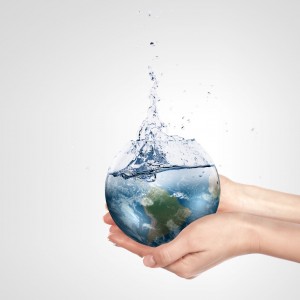Water Conservation
Understanding Water Desalination Could Solve the World's Water Crisis!
About 71% of the planet is covered in water and there is more than 320 million cubic miles of water both above and below ground. Of that, only about 4% is drinkable.
The drinkable water from freshwater lakes, rivers and underground aquifers is expected to be enough to supply water for the planet’s population – in certain areas. The rapid growth of the global population – it’s at 7 billion now and expected to reach at least 8 billion by 2050 – means that an increasing number of people will live in areas where water supplies are scarce.
 Researchers from the Massachusetts Institute of Technology estimated in a report this year that by 2050, more than half of the world’s population (about 5 billion people) will live in areas that are water stressed. India, Northern Africa and the Middle East are some of the regions that are expected to have the worst issues, but there also will be problems in areas of the western world where arid conditions prevail. Unlike crude oil, there are no “alternative” sources for water. There’s no man made replacement.
Researchers from the Massachusetts Institute of Technology estimated in a report this year that by 2050, more than half of the world’s population (about 5 billion people) will live in areas that are water stressed. India, Northern Africa and the Middle East are some of the regions that are expected to have the worst issues, but there also will be problems in areas of the western world where arid conditions prevail. Unlike crude oil, there are no “alternative” sources for water. There’s no man made replacement.
That’s the challenge. That leads many people to ask, “what is desalination and how do you make the ocean water drinkable?” Quite simply, desalination, the process of removing salt from water and making it drinkable and useable for agriculture, could be at least part of the answer.
Most of the world’s water – about 96% – is saline water, or water that contains dissolved salt. Simply put, desalination is the process of removing salt from the water. Of course, when attempting to create a large drinking water supply for a large population, the process involves large plants and a fairly expensive process.
The desalination process mirrors what happens in nature’s hydrological cycle, where solar heat causes evaporation from lakes, rivers and oceans on the earth’s surface. The evaporated water eventually rises to meet cooler air, condensing into dew that eventually falls back to the surface in the form of rain (or sleet and snow in colder climes).
It typically takes about two gallons of seawater to create one gallon of drinkable water.
The United States Geological Society (USGS) reports that the need for freshwater supplies is already important in arid parts of the world – which is why countries that are cash rich but water poor like Saudi Arabia are leading the world in using desalinated water.
Saudi Arabia, Kuwait, the United Arab Emirates, Qatar and Bahrain consume about 70% of all the desalinated water in the world, according to the USGS.
The United States has not raced into desalinated water because most of the country continues to have access to a large freshwater supply of drinking water. However, California – which has been hit by numerous periods of drought – has moved forward on desalination projects.
The largest desalinated water plant in the world is being built north of San Diego on the Pacific Ocean. The $1 billion plant, which is expected to open in 2016, will provide San Diego County with 50 million gallons of drinking water every day.
The plant, which is being built by Boston-based Poseidon Water, is considered a test case, according to the San Jose Mercury News. Supporters believe it is an engineering marvel that will help keep the area from suffering during droughts. Critics fear it will harm the environment and also prove that desalination is too expensive.
Many governments have been hesitant to get into desalination because of the costs. In Santa Barbara, Calif., one $34 million plant shut down after just four months in 1991 because the cost was too high. However, Santa Barbara officials recently began looking into reopening the plant.
In Australia, according to the Mercury News, $10 billion was spent to build six plants, four of which are now shut down. Paying for desalination is worth it during drought conditions but is more costly than other means of getting water when then water supply is normal.
Still, given the low water supplies in some areas, desalination continues to be an attractive choice. In El Paso, Texas, the Kay Bailey Hutchison Desalination Plant (the world’s largest inland desalination plant) delivers about 27 million gallons of water from a brackish underground water supply.
When it comes to desalination, cost is the issue. No one seems to argue that the process doesn’t work or that it also doesn’t clean out other pollutants in addition to salt, making the resulting water some of cleanest available.